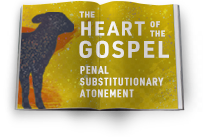Did the Church Fathers Affirm Penal Substitutionary Atonement?
The substitutionary death and resurrection of Jesus Christ is the centerpiece of the Bible and of Christian theology. Substitutionary atonement was foreshadowed in the sacrificial system of the Old Testament, accomplished in the New Testament, and has been preached, believed, and treasured throughout history. Since the Reformation, Protestants have heavily accented the penal nature of substitutionary atonement. Penal substitution, a judicial term, means that Jesus paid the penalty for sin in a legal sense, purchasing our redemption at the cost of his blood. We are saved because Jesus took our place and paid our penalty.
The Reformers highlighted this doctrine because of the way it fit with their view of forensic justification, especially in their refutation of Catholic view of righteousness and justification. This background has led some to wonder whether the Reformers invented the doctrine of penal substitutionary atonement, or if we can find traces of it in the wake of the apostles’ death. Did the church fathers also hold to the doctrine of penal substitution? The answer is yes and no. Yes, the church fathers spoke often of Christ’s substitutionary death on the cross, occasionally in penal language, but no, they did not place it centrally the way the Reformers did. For the church fathers, Jesus died primarily as our substitute to triumph over death and the devil. To suggest that penal substitutionary atonement (PSA) was the dominant model for the fathers, or even a prevalent one, is too strong. However, it’s just as problematic to deny its presence altogether in the early church.
Perhaps the most beautiful feature of the father’s description of the nature of the atonement is how multidimensional it is. In the cross Jesus died to take back what the Devil had claimed (Christus Victor), he died to bring about our healing (Christus Medicus), he reconstituted humanity as a new and better Adam (Recapitulation), he satisfied the payment for sin (Satisfaction Theory), and he died on behalf of sinners to pay their penalty for sin (PSA). The presence of penal substitution in the fathers is hotly contested, but when we examine the evidence, it seems clear that PSA was at least one aspect of the atonement that certain fathers claimed.
We’ll look at just two works in the early church to show this—the Epistle to Diognetus and On the Incarnation, though we could add Justin Martyr, Eusebius of Caesarea, Ambrose, Augustine, Gregory the Great, and many more. [1] Again, when we allow that the fathers explained the purpose of the atonement in multiple ways, we see that penal substitution was one of them, even if not the central motif.
THE EPISTLE TO DIOGNETUS
The Epistle to Diognetus, a second-century apology (c. AD 150), is often described as the gem of early Christian epistles. In it, an unidentified author wrote to the unknown recipient, Diognetus, asking him a series of questions including why Christianity has come into the world now and not before (Diogn. 1). The answer he gives is that sin had to have time to swell up so that Jesus could come and atone for it. Humanity needed to know the weight of sin, to experience God’s patience, and to recognize our inability to enter God’s kingdom on our own, an idea he seems to get from Paul (Diogn. 9.1; cf. Rom 3:25–26; 5:6; Gal 4:4). Then, in one of the most profound statements about the atonement from the early church, the author wrote this:
For what else was able to cover our sins except the righteousness of that one? In whom was it possible for us, the lawless and ungodly to be justified except in the Son of God alone? O the sweet exchange, O the inscrutable work (of God), O the unexpected benefits (of God), that the lawlessness of many might be hidden in one righteous man, while the righteousness of one might justify many lawless men (Diogn. 9.3–5).
“O sweet exchange!” These words express PSA from theology to doxology. Jesus is our exchange—he is the sinless one who died for the sinful ones. His righteousness and godliness were needed in the stead of the unrighteous and ungodly. Just several lines before these, we read that the “wages—punishment and death—were to be expected” because of sin. God demanded punishment on account of sin, but in his mercy and patience, he substituted Christ to pay those wages, the “holy one for the lawless, the guiltless of the guilty, the just for the unjust, the incorruptible for the corruptible, the immortal for the mortal” (Diogn. 9.2). Tied together, then, are the concepts of PSA and justification, both with legal categories. God justifies the ungodly by the penal substitutionary death of his Son.
But the author also resounds with gratitude and worship in these words. The death of Jesus Christ to pay the penalty for sin is sweet! Penal substitution is the great exchange, it is the inscrutable work of God, and it should cause anyone who thinks about it to worship.
ATHANASIUS
Roughly one hundred and fifty years later, Athanasius of Alexandria (AD 296–373) expressed his thoughts on the atonement. Athanasius is best remembered for his steadfast conviction to orthodox Christology at the Council of Nicaea. He stood contra mundum, against the world, as he fought for Jesus’ full divinity against Arianism. His enduring assault in response to Arianism is found in his book On the Incarnation, in which he explains why God had to become man.
For Athanasius, the atonement and incarnation are necessarily interwoven. Jesus became man precisely because we needed someone who could conquer death in our stead. In explaining this, he repeatedly connects Christ’s death in our place to the penalty we owe. He wrote, “And thus taking from our bodies one of like nature, because all were under penalty of the corruption of death gave it over to death in the stead of all, and offered it to the Father” (On the Incarnation 8). Sin brings with it a penalty of death and Jesus was given over to death in our place.
In a section on the purpose of the incarnation, Athanasius set his sights on the cross:
But since it was necessary also that the debt owing from all should be paid again, for…it was owing that all should die…he next offered up his sacrifice also on behalf of all, yielding his temple to death in the stead of all, in order firstly to make men quit and free of their old trespass, and further to show himself more powerful even than death, displaying his own body incorruptible as first fruits of the resurrection of all (On the Incarnation 20).
Here we get a glimpse of both penal substitution and Christus Victor. Jesus died to pay our debt both to make us free of sin and to show that he has conquered death. Although Athanasius typically speaks of the cross in what we call Christus Victor, there are numerous places that his language could be interpreted to be in line with penal substitution.
CONCLUSION
Thorough studies of the atonement in the church fathers are needed. Many evangelicals are retrieving the fathers today, and this is for the enrichment of our heritage, and what better place to focus our attention than on how the first followers of Christ understood the atonement? Mostly, I hope we can recover their multifaceted view of the cross. So long as PSA remains the fundamental purpose of the cross, as it is in Scripture, the other aspects of the atonement, from Christus Victor to Christus Medicus, can fill out our meditation on the cross and help us to appreciate all the things Jesus Christ achieved in his death.
[1] See especially Steve Jeffery, Michael Ovey, and Andrew Sach, Pierced for our Transgressions: Rediscovering the Glory of Penal Substitution (Wheaton, IL: Crossway, 2007), 161–83.









